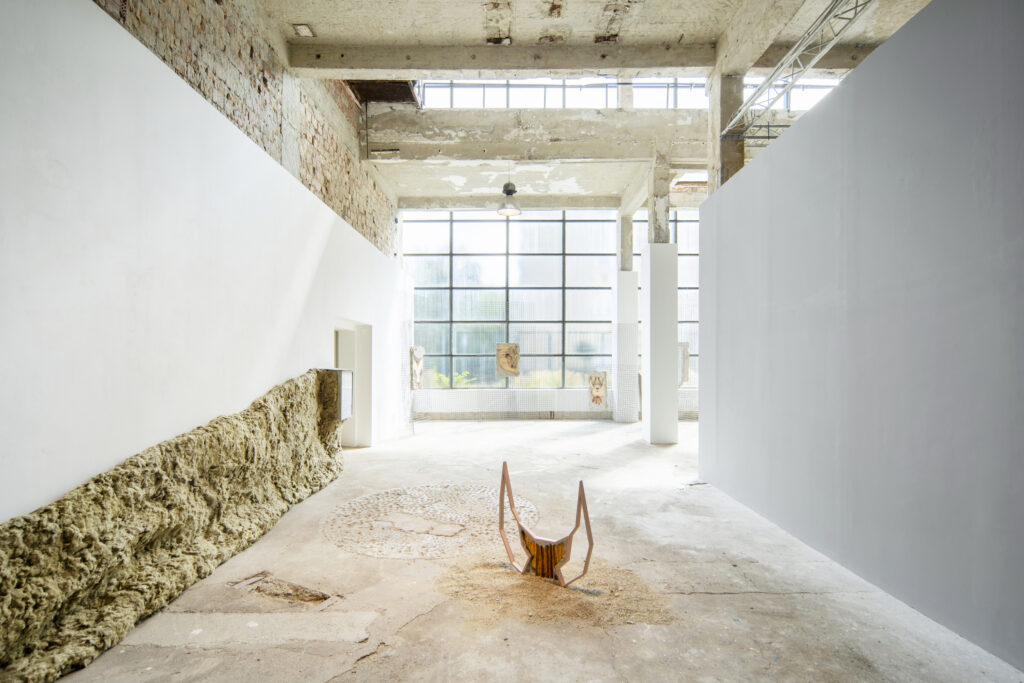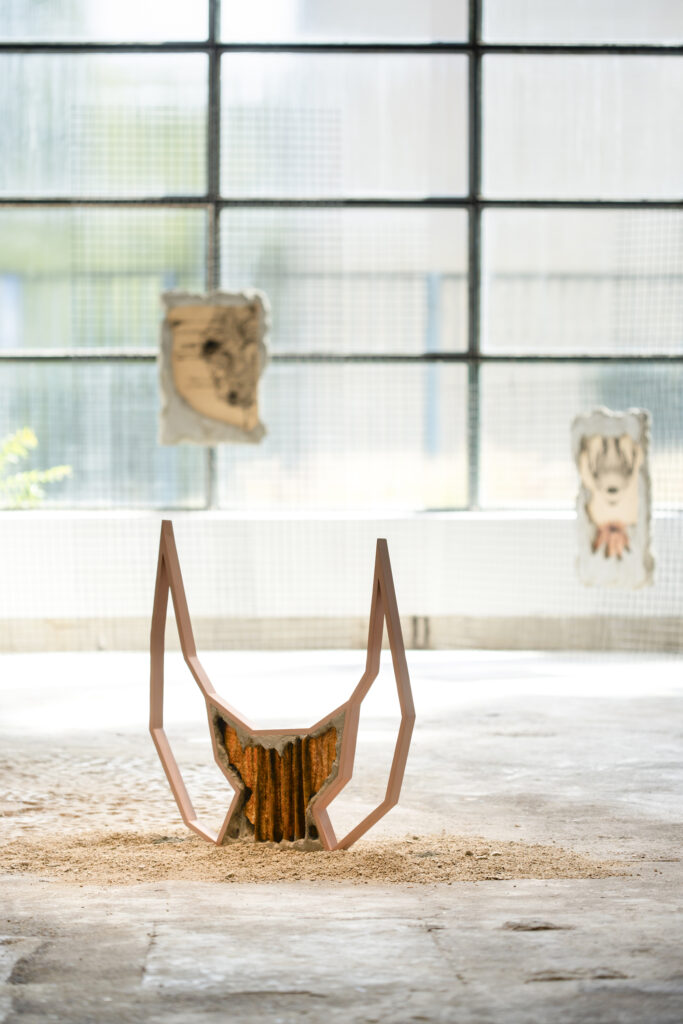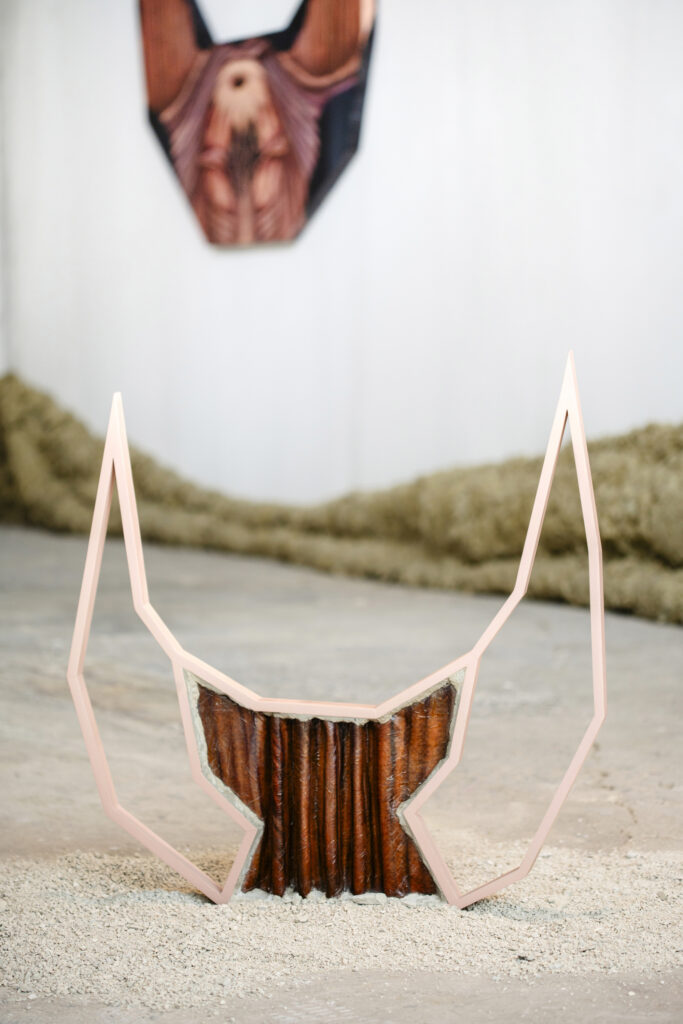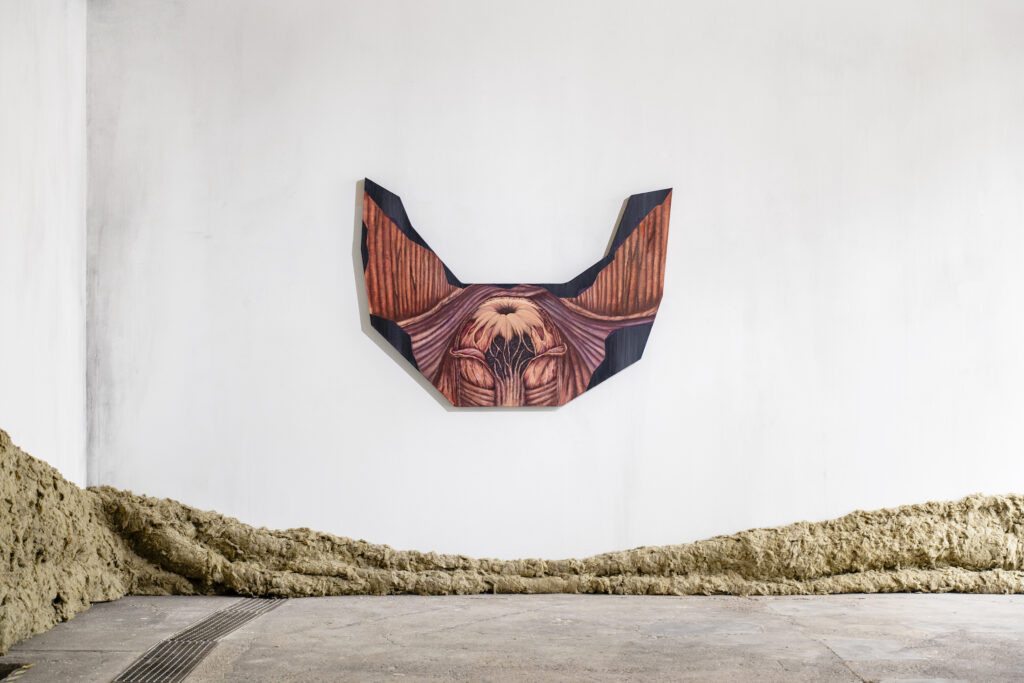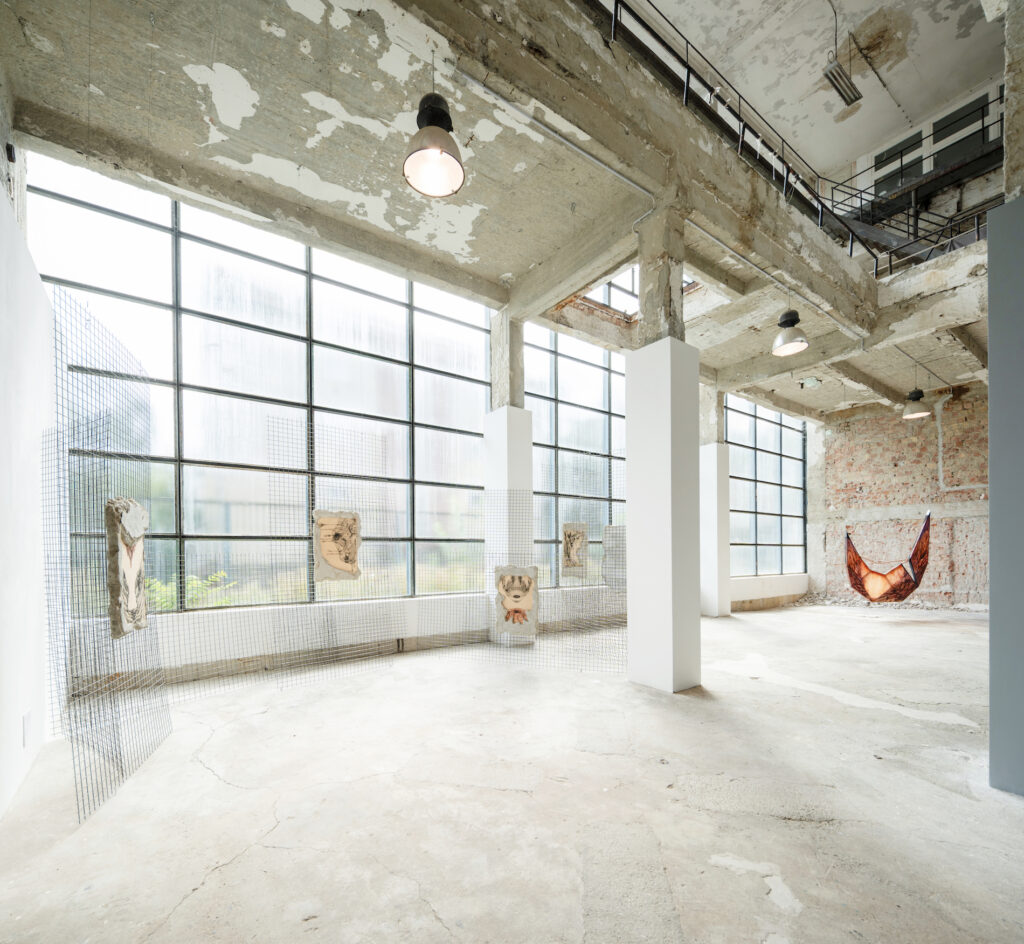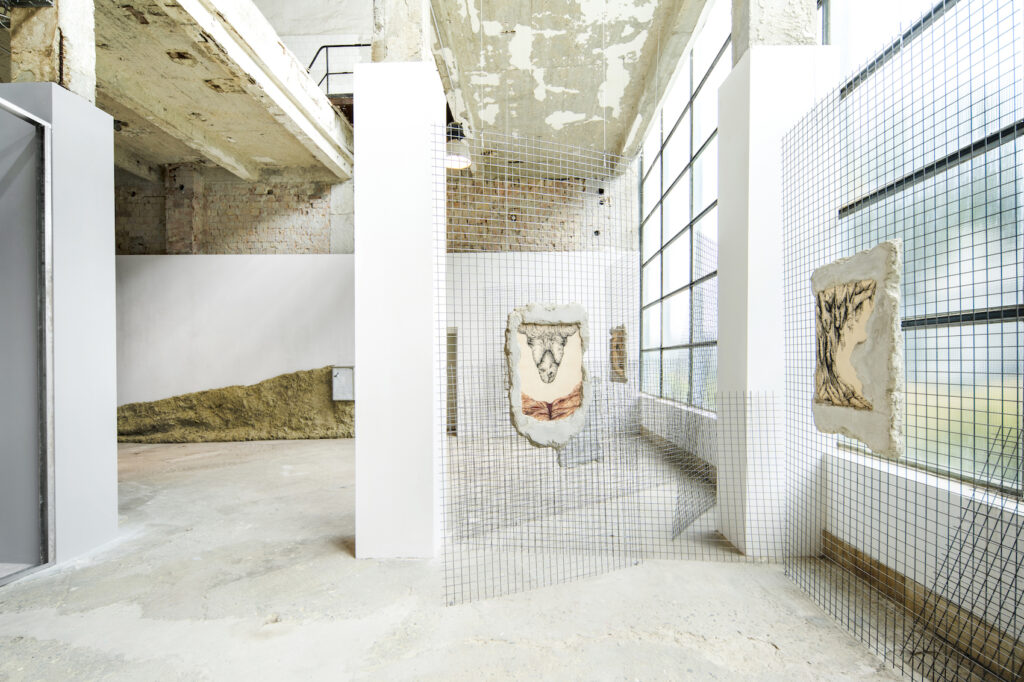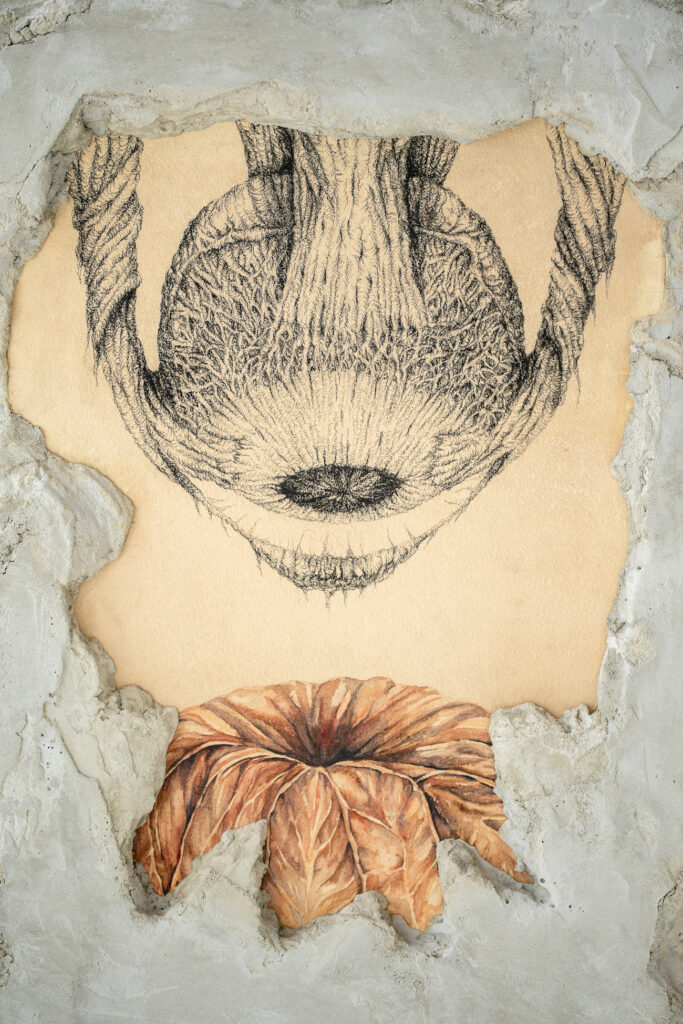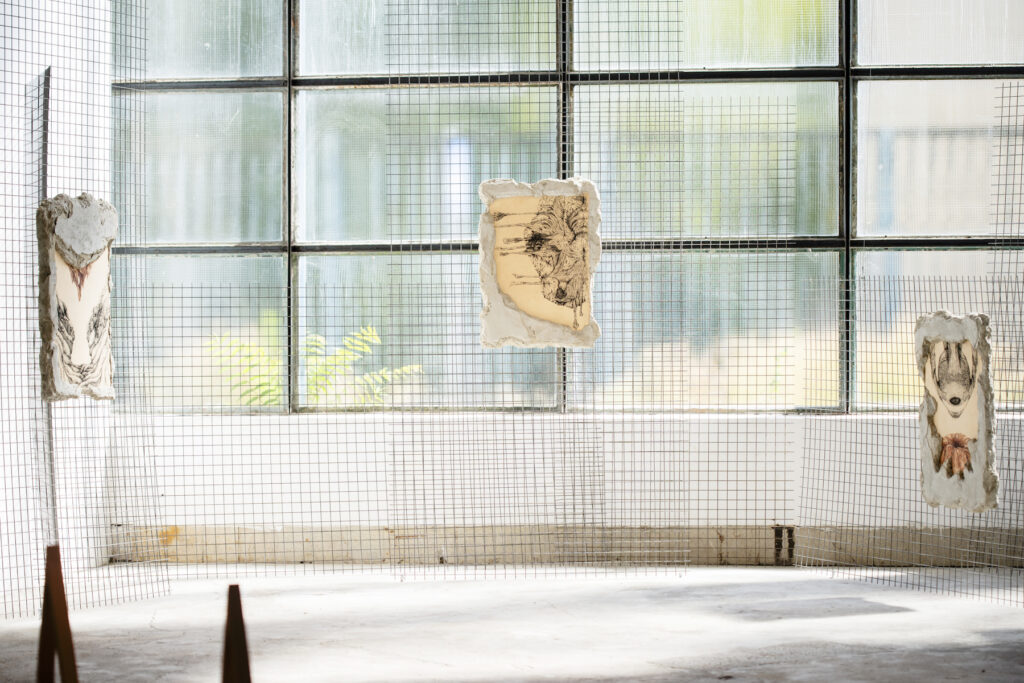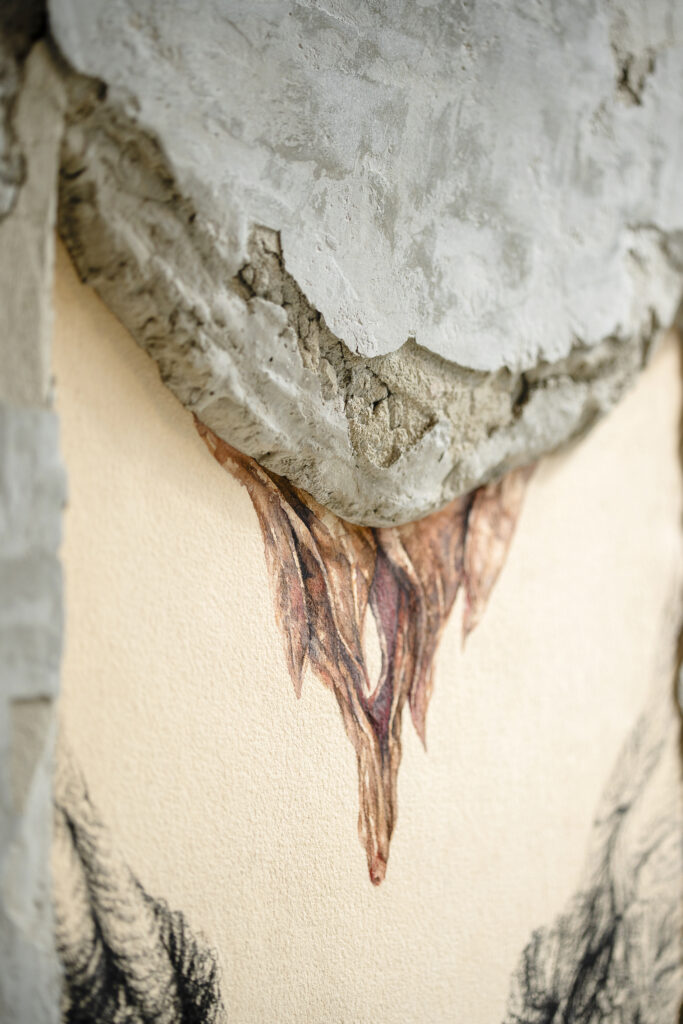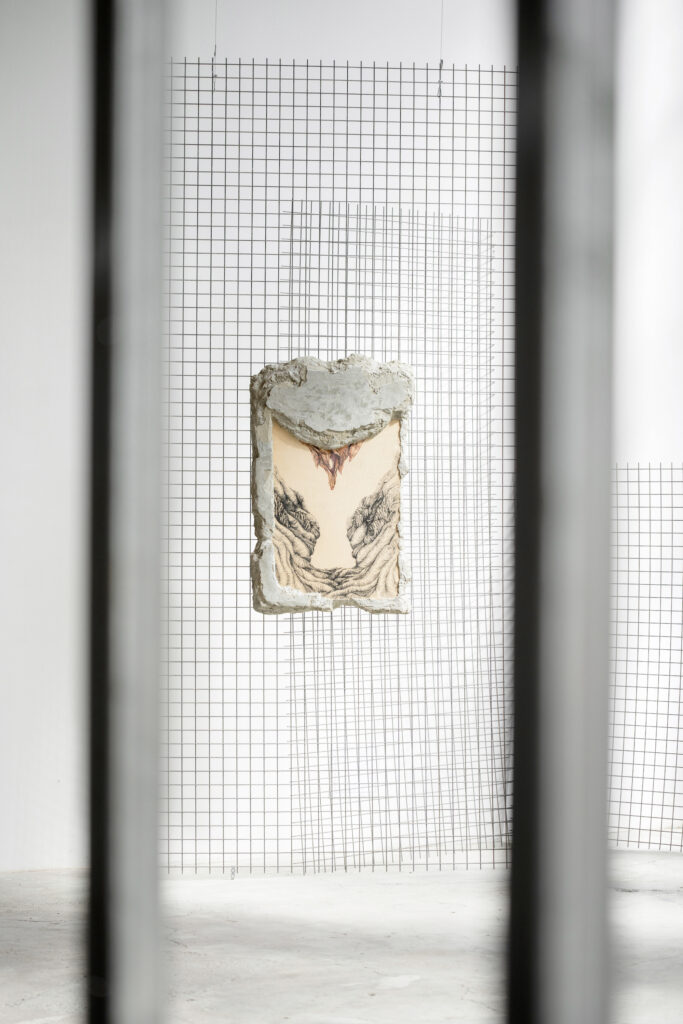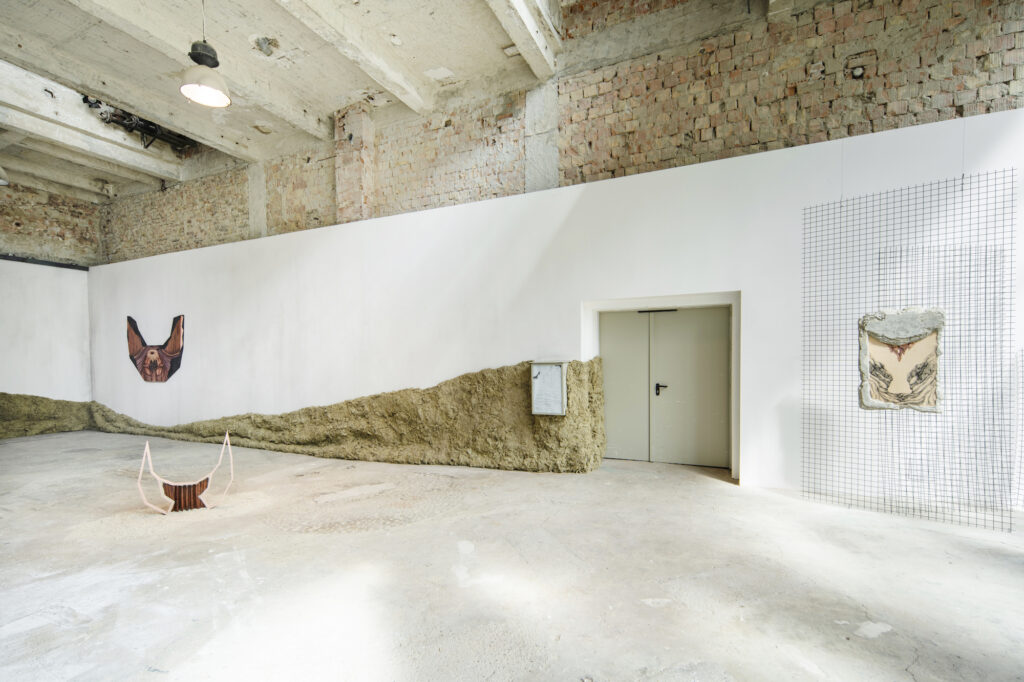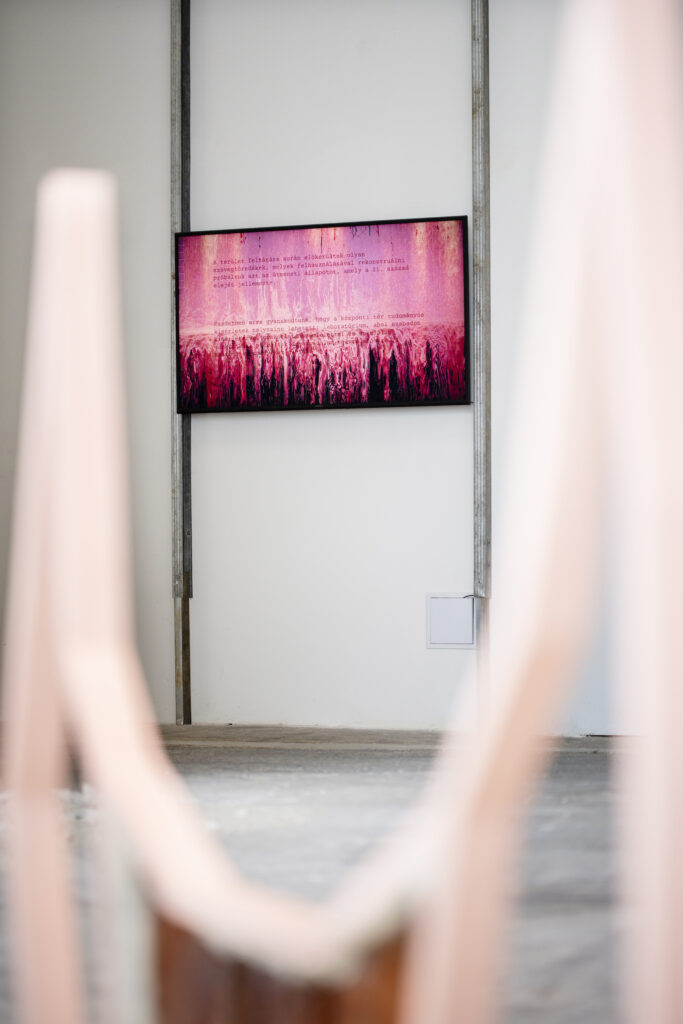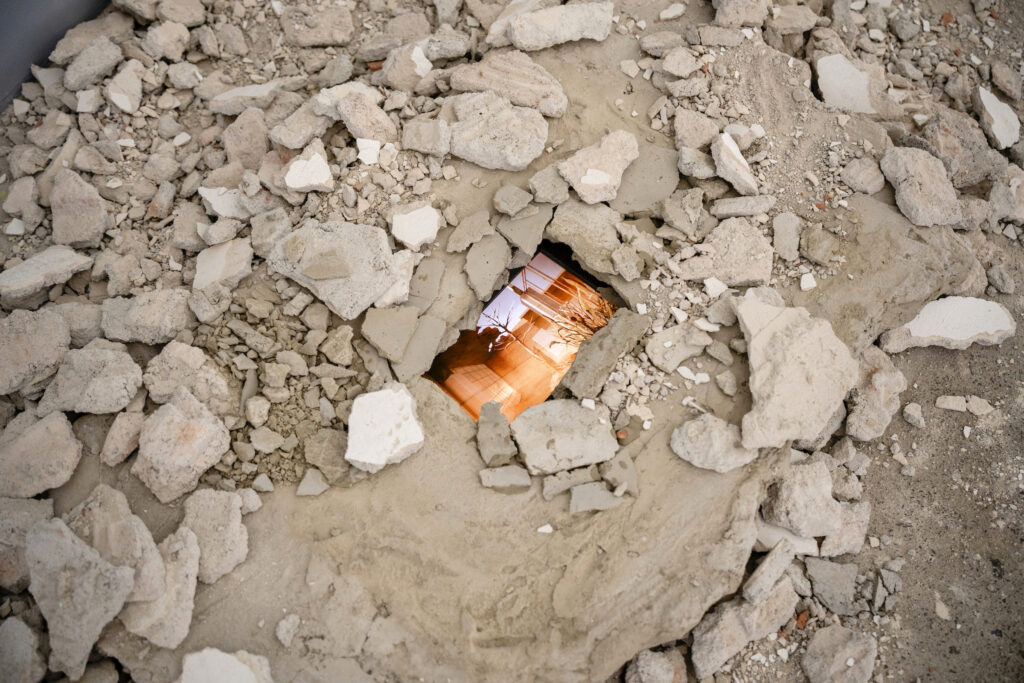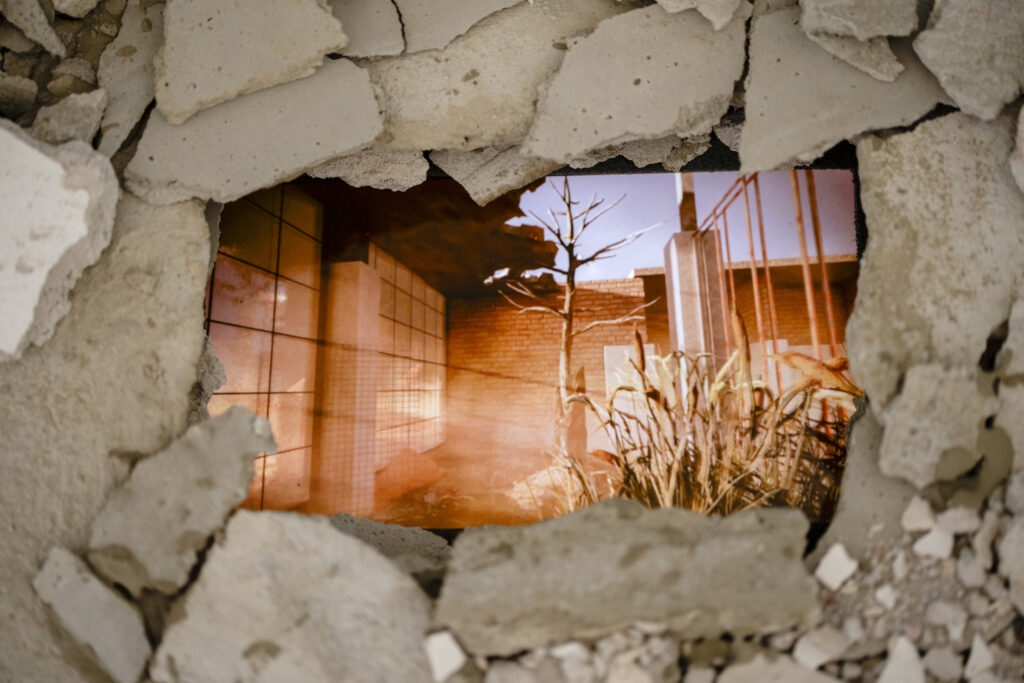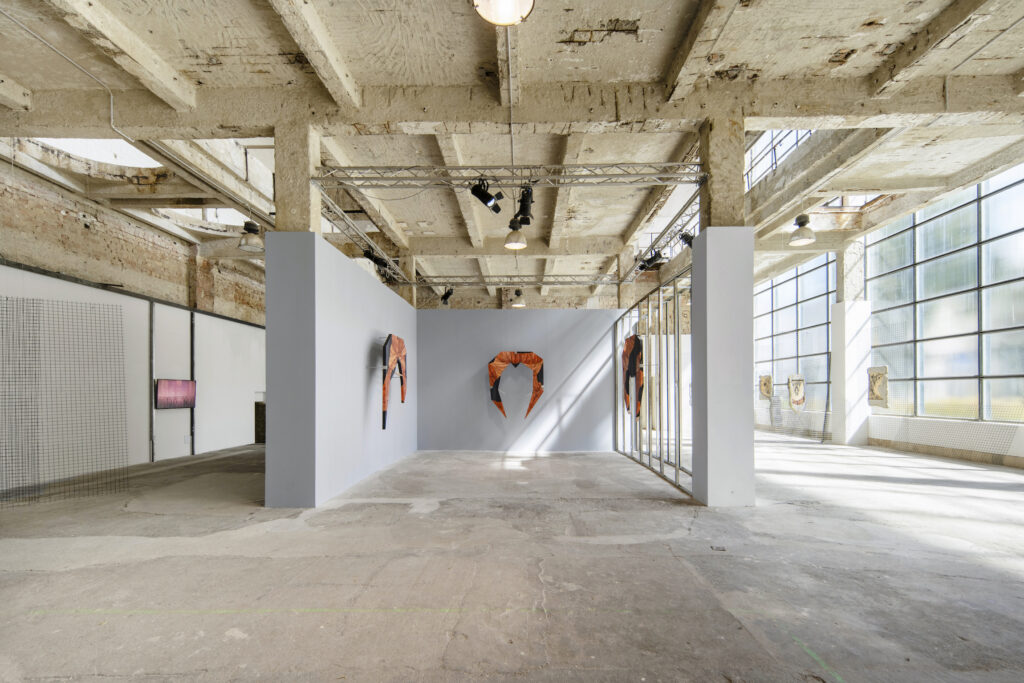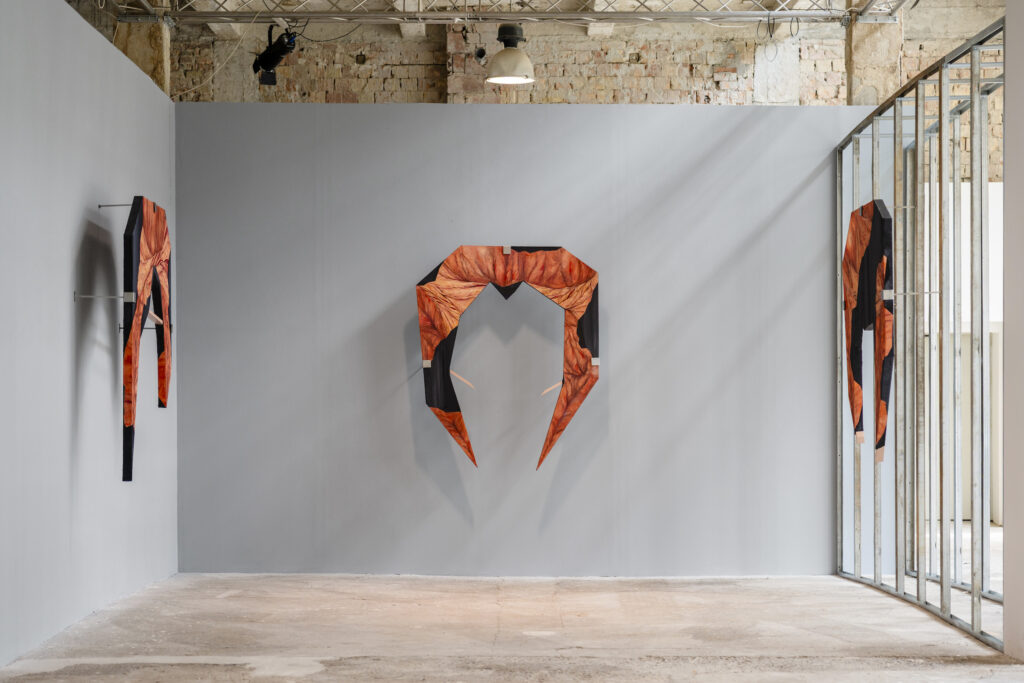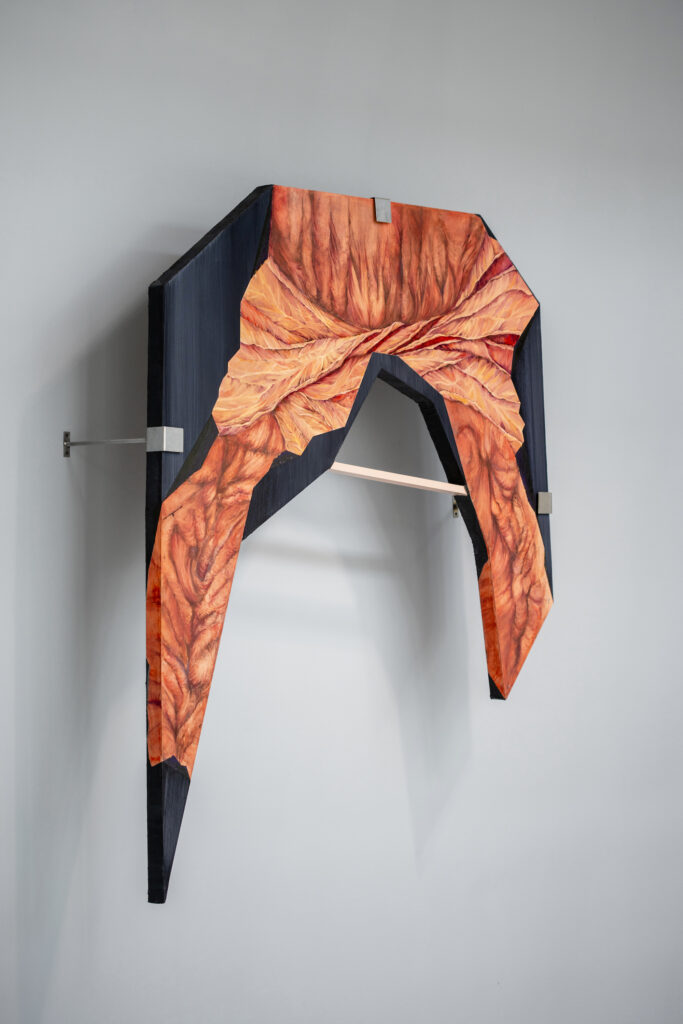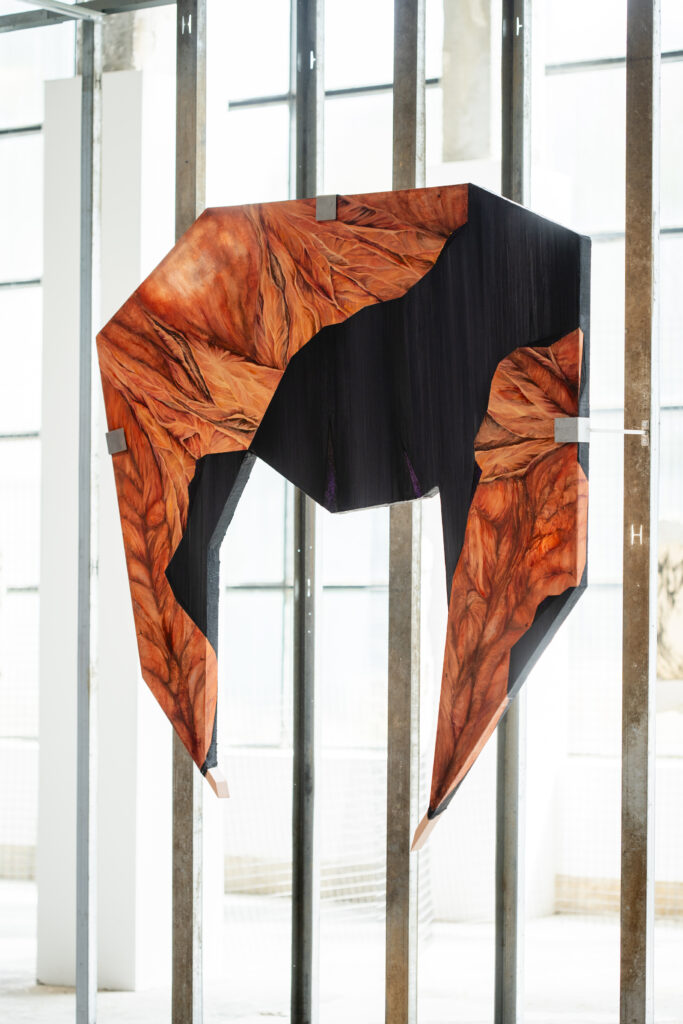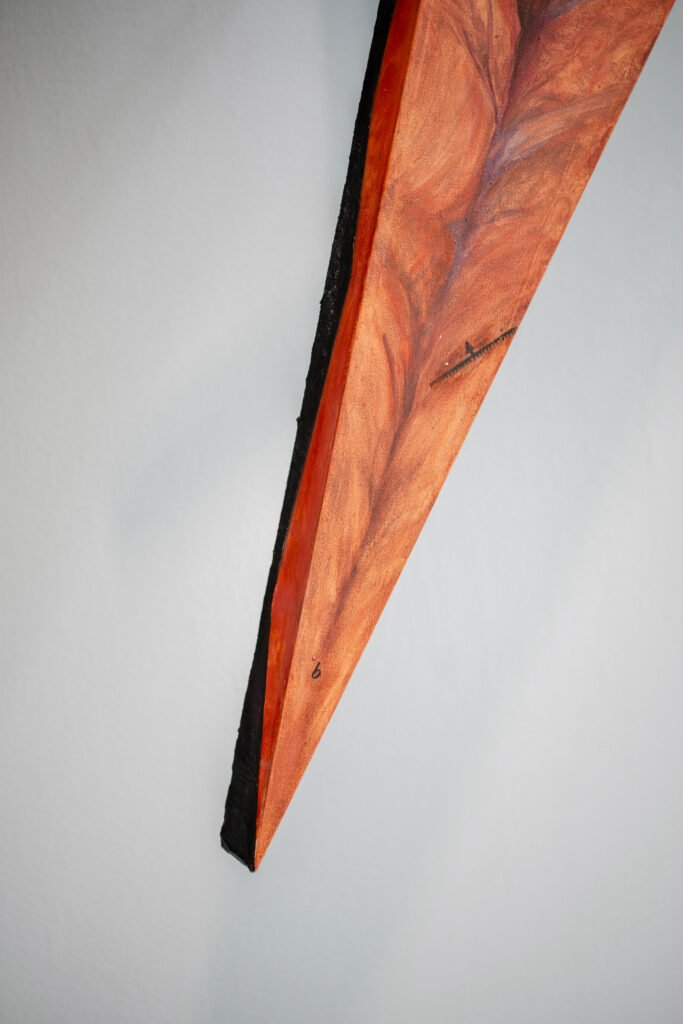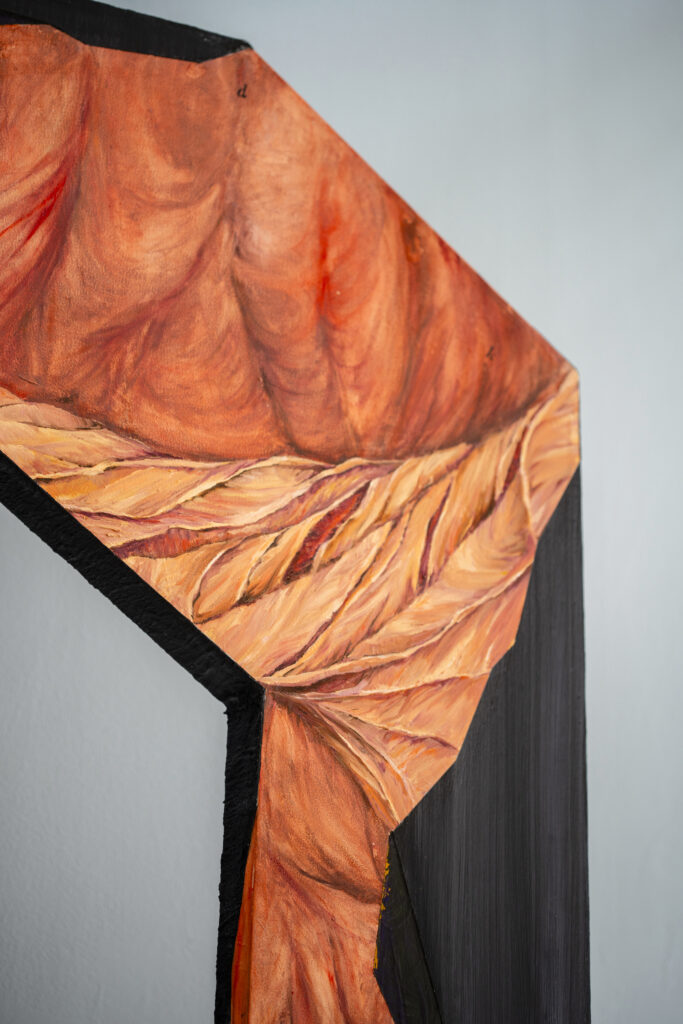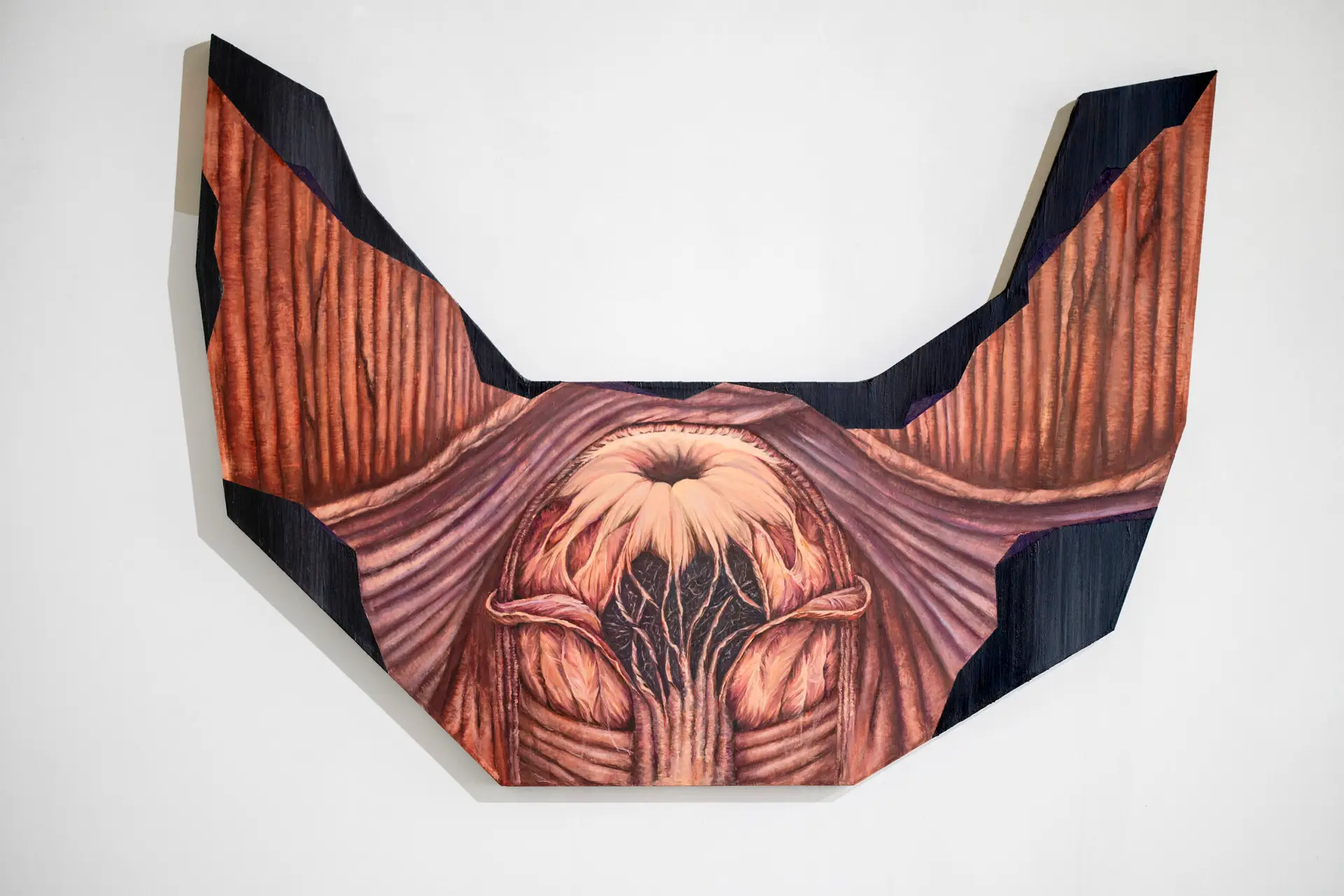Artist: Lili Agg
Title: Find T-6391/3
Curator: Lili Rebeka Tóth, Zsófia Kókai
Venue: Torula, Győr
Photos: Zsuzsi Simon
Lili Agg’s solo exhibition Find T-6391/3 transforms the former Torula yeast factory into an imagined excavation site from the future. The present is unearthed as the past, in a future where the concepts of art, artwork, and artistic institutions no longer hold meaning. Within this framework, the narrative total-installation’s groups of objects appear as archaeological finds to be deciphered—fragmented traces of the sociopolitical order of a bygone era. Yet within the dialectic of spatial arrangement, it is not entirely clear whether we are truly confronted with a landscape: nature quietly assumes a human form, terrain turns into folds of skin, roots and vines transform into tendons and internal organs.
Find T-6391/3 is based on Agg Lili’s doctoral research, which rethinks the notion of utopia and, through contemporary utopia theories, attempts to examine sustainable culture while probing the potential role of art in shaping our imagination of the future. Although the exhibition outlines a dystopian vision, Agg employs the speculative method of future archaeology to reveal how, once distanced, every present cultural object (in the Groysian sense) in fact becomes a possible part of the archive of the future. Thus, the destruction that appears in the exhibition space becomes a symbol of renewal—the total demolition of ossified, authoritarian, and (self-)exploitative systems, and of building anew upon the ruins. The installation functions as a kind of playground or “sandbox,” where the viewer navigates among parallel narratives, identifying the power structures and systemic flaws that seep into the deepest layers of cultural institutions and human existence. Along the designated path, the visitor encounters concepts that, as tools of social adaptation, help dismantle these destructive and oppressive processes—ushering in the birth of a utopian beginning.
Agg’s primary medium is painting that steps out of the plane into objecthood, highlighting the pictorial turn of the latter half of the 20th century. The first, central group of works, located near the entrance, is Idol I–III. These three large-scale paintings appear as fetish objects of power in the form of “idols,” simultaneously representing the fear, attraction, and reverence that characterize our relationship to images, shifting between aggressive and fragile formal and visual structures. The works evoke classic symbols of power, such as the headdress or horns. By revealing their wooden structures, through shifts in compositional form and chance cropping, the series interprets the picture as construction. Their surfaces draw upon landscapes, maps, architectural plans, and medical imaging scans. Understanding these works requires a complex mode of reading, compelling the viewer to move beyond superficial reception or passive contemplation and to actively analyze the images. In doing so, the viewer recognizes paradoxical situations in which they become victims of pictorial manipulation despite being fully aware of their own misdirection. Following the central group both formally and conceptually are two polarized works—Idol: Moult and Idol: Reconfiguration—representing the dialectics of destruction and renewal.
In his book Philosophy of Care, Boris Groys, through an analysis of Alexandr Bogdanov’s writings, points out that as long as we continue to use the same linguistic and legal structures that form the ossified skeleton of authoritarian systems, even while advocating for the emergence of a horizontal, “rhizomatic” society, we are in fact still reinforcing processes of ossification. The series Symbol System from the Early 21st Century was created in response to this thought: its drawings, cast in concrete, merge the formal language of ancient stone tablet fragments with the analytical method of medical illustrations, proposing alternative networks of concepts for constructing a new structure.
The total-installation’s final, synthesizing element is the video commentary Hypothesis on the Existence of the Concept of “Art.” With the collaboration of invited artists, Agg attempts to map out critical insights and coping mechanisms that might serve as a toolkit for creating a more humane, freer, and more sustainable cultural environment. The participating artists share their hypotheses regarding the future structures of art through concrete experiences, personal reflections, and free associations.
1 Groys, Boris: Philosophy of Care, Verso, London, New York (2022)
